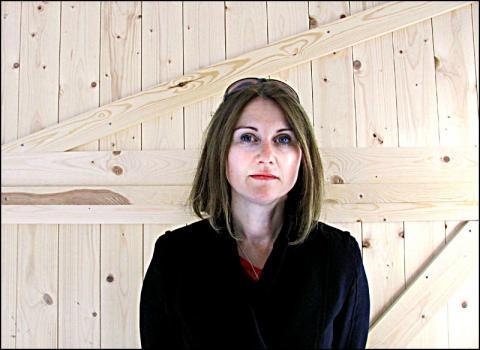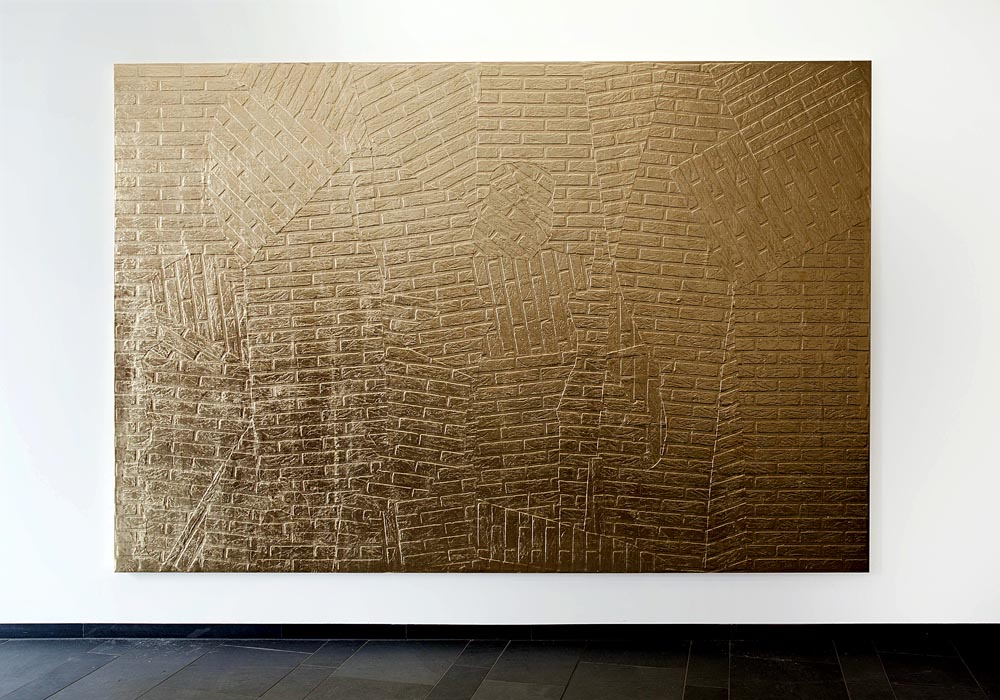Have You Met... Susanne Prinz
Have You Met... Susanne Prinz

If Mitte was a worm, Rosa-Luxemburg-Platz would be one of its hearts. The other four, you can certainly name them. What you can't deny is that the corners of the Volksbühne have a lot to offer.
On its newest -and most shocking- building you can find the Verein zur Förderung von Kunst und Kultur am Rosa-Luxemburg-Platz e.V. under the supervision of Susanne Prinz. Susanne studied art history in Munich and Leipzig, became an intern at the Rüdiger Schöttle Gallery, where she later on took over the direction. She's in charge of the Artist Pension Trust Berlin and counts twenty years of experience in the German art market. In 2008 the curatorial works for Art Forum Berlin were assigned to her. Not to forget that she also keeps herself busy as a freelance writer and curator.
The Association for Art and Culture on Rosa Luxemburg Platz is a private initiative which aims to promote active participation in the Rosa-Luxemburg-Platz area. For the time being, they have their headquearters in L40, that peaked black house in the corner with Torstr. “It's a room for sculpture”, she assures me. And the truth is that the space is surprising, and it can be cozier than you might think. The exhibiting venue will be moving at some point this autumn. Where to, it's still TBA. And this is exactly the spirit of the Association: it's good to have a fixed place, but not necessary. "However, we will always have the foyer... " so anytime time you walk by Rosa-Luxemburg ecke Linienstr., don't forget to take a look of the black house's ground floor, there will be always some work on view after they move. Currently: The Double Disappearance of an Architect by Raphael Danke.

The Double Disappearance of an Architect by Raphael Danke. picture by Maria Santos
What was the main concept behind your space, before you started?
I started working for Associations (German: Kunstvereine) because they were more focused in contemporary art than any other institutions back then. The Verein started in 2002 but I joined by the end of 2009. They were two residents concerned about the cultural offer in the neighborhood who I knew. There was a time in which the Babylon cinema was about to close, but the area transformed itself completely when the first galleries moved around here.
I started working for Associations (German: Kunstvereine) because they were more focused in contemporary art than any other institutions back then. The Verein started in 2002 but I joined by the end of 2009. They were two residents concerned about the cultural offer in the neighborhood who I knew. There was a time in which the Babylon cinema was about to close, but the area transformed itself completely when the first galleries moved around here.
Did you have any particular goals in mind, how do you feel they were met?
I always tried to find the perfect place, sometimes a couple of walls, some others it's a public space. However every project needs a space according to its needs. And money to be produced and financed. I also wanted the members to get more involved. The Association wants to reach any kind of people. It's obvious that the art people are going to be interested, it's more fun when people from other areas want to participate on this too.
I always tried to find the perfect place, sometimes a couple of walls, some others it's a public space. However every project needs a space according to its needs. And money to be produced and financed. I also wanted the members to get more involved. The Association wants to reach any kind of people. It's obvious that the art people are going to be interested, it's more fun when people from other areas want to participate on this too.
This search for the right space leads to try a lot of things, even a house in where people live and where you can still find their traces. Or a shop. Or maybe outdoors. Also I got more interested in organizing things like the dinner we made with Ariel Reichman
I find quite successful the fact that there is always something going on around the Monument for Historical Change by Clegg and Guttmann: people meeting, eating, children's birthdays, skaters... the sculpture is sort of a stage for every day life. Also a Sunday some weeks ago I saw a fashion spread on the Süddeutsche Magazin in which that sculpture was featured. They hung coats on its shoulders!.
How do you finance yourself?
Diverse sources: membership fees, private donations from the member, different companies and foundations, embassies, institutions such as the Institut Française or the Institute for foreign affairs (IFA)...We also get sporadic Senatsgeld and Kulturfonds for some projects. But unfortunately no one comes and says: hello Kunstverein, here you go fifty thousand for this year.
Diverse sources: membership fees, private donations from the member, different companies and foundations, embassies, institutions such as the Institut Française or the Institute for foreign affairs (IFA)...We also get sporadic Senatsgeld and Kulturfonds for some projects. But unfortunately no one comes and says: hello Kunstverein, here you go fifty thousand for this year.
What do you consider essential elements for curating a successful exhibition?
The communication between the artists and the association: to discuss all the details together, to be precise, to take decisions... there's an idea at the beginning, a project to be staged, and it must be displayed in the right place. I do the mediation, I keep myself busy researching. And I have to deal between two parties: the art and the space. Once I had to deal with a theater group, which had a wonderful play but didn't find the right stage. Then I found the most suitable place in the rooftop of a house.
The communication between the artists and the association: to discuss all the details together, to be precise, to take decisions... there's an idea at the beginning, a project to be staged, and it must be displayed in the right place. I do the mediation, I keep myself busy researching. And I have to deal between two parties: the art and the space. Once I had to deal with a theater group, which had a wonderful play but didn't find the right stage. Then I found the most suitable place in the rooftop of a house.
Reflecting upon the time you have been working for the Association, what would you say you have learned about curating?
The most exciting thing is the process, how it happens, how art comes into the world. I'm no longer interested in classical openings: hanging pictures on a wall, two hundred people drink beer for half an hour, then they go. It's fun, but I'm more eager to organize specific events in which people can gather together to reflect and interact with the work and the artist for a longer time.
The most exciting thing is the process, how it happens, how art comes into the world. I'm no longer interested in classical openings: hanging pictures on a wall, two hundred people drink beer for half an hour, then they go. It's fun, but I'm more eager to organize specific events in which people can gather together to reflect and interact with the work and the artist for a longer time.
What is your favorite mainstream galleries in Berlin, in the world?
There is a couple of exciting places in Berlin: Tät ,which is quite diverse, Autocenter , n.b.k., and Salon Populaire got a political component, something that I find quite important.
And, of course, there is the Louvre, the most amazing art collection ever. The whole thing it's just great: the palace and the new spaces. And opposite to it, the Palais Royal, which hosts a spectacular example of art in open space in its courtyard. But I guess you were expecting to hear something more contemporary...
There is a couple of exciting places in Berlin: Tät ,which is quite diverse, Autocenter , n.b.k., and Salon Populaire got a political component, something that I find quite important.
And, of course, there is the Louvre, the most amazing art collection ever. The whole thing it's just great: the palace and the new spaces. And opposite to it, the Palais Royal, which hosts a spectacular example of art in open space in its courtyard. But I guess you were expecting to hear something more contemporary...
Do you have any favorite curators?
I find quite fascinating what Anna-Catharina Gebbers does (Bibliothekswohnung). Also Udo Kittelman (former optician, current director of the Neue Nationalgalerie) always curates outstanding exhibitions. He made that one in Frankfurt, establishing dialogues between contemporary art and objects from the fifties and sixties, that was crazy!.
I find quite fascinating what Anna-Catharina Gebbers does (Bibliothekswohnung). Also Udo Kittelman (former optician, current director of the Neue Nationalgalerie) always curates outstanding exhibitions. He made that one in Frankfurt, establishing dialogues between contemporary art and objects from the fifties and sixties, that was crazy!.
Where will you and the space be in 5 years?
It will be grown. Brought into perfect spaces. Other spaces. No white cubes of course.
It will be grown. Brought into perfect spaces. Other spaces. No white cubes of course.
In Berlin or somewhere else?
Well, Berlin can be stressful. If not Berlin in a medium to large city: Turin, Milan, Hannover, Hamburg. Not in New York, Tokyo or Timbuktu.
Well, Berlin can be stressful. If not Berlin in a medium to large city: Turin, Milan, Hannover, Hamburg. Not in New York, Tokyo or Timbuktu.
If you had to describe your space in one sentence...
The Verein intends to provide the most suitable space for each project
If you had to describe your space in word...
ideal
The Verein intends to provide the most suitable space for each project
If you had to describe your space in word...
ideal